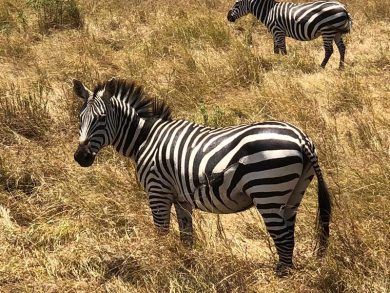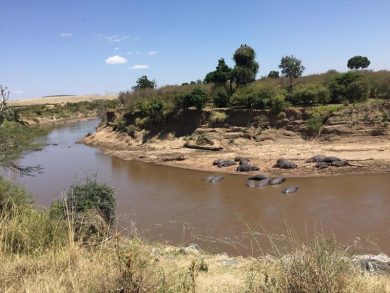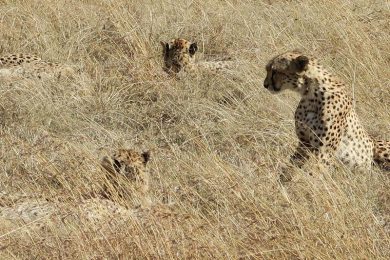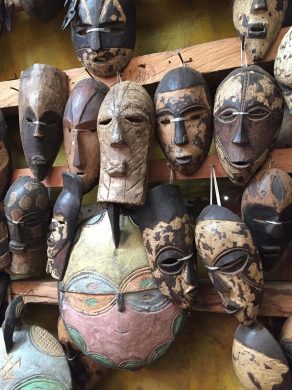
Out of Thailand in to Africa
Jambo, jambo,” the deep and gentle voice of the security guard breaks the dead silence of the night. “This is your morning call.” “Jambo”, meaning “hello” in Swahili, was the first word we heard as a greeting from our wake-up caller. He was our mobile alarm clock since there were no telephones in our tented camp. It was 4.30am and we were to get ready for our game drive at the Maasai Mara National Reserve. We had arrived at this site which was situated in South West Kenya, 240 miles from Nairobi the night before.
The weather was about 11 degrees centigrade and there was no heater in the tent. Shivering, we took our hot showers and quickly got dressed. We took a long walk in the dark to make our way to the open-air dining room of the camp to have our breakfast. It was a good breakfast – with eggs, sausages, beans, toast, cereal, coffee and tea and much more – but all went cold very quickly because of the chilly weather. But no matter. Or “Hakuna Matata”, meaning “not a problem” in Swahili.
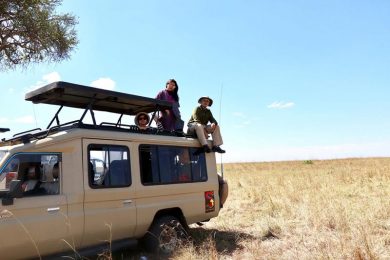
Safari
There were five of us among the tour group of 18 holidaymakers from Thailand. Most of us hadn’t been to Kenya before and were very excited to experience the game drive. We all got on our respective jeeps and headed for the Maasai Mara National Reserve, the large game reserve in Narok County which is adjacent to the Serengeti National Park in Mara Region Tanzania. Each year, during the months of July to September, over a million wildebeest, zebra and gazelles migrate to Maasai Mara in search of greener pastures. Like every year, they cross the Mara River which is inhabited by fierce crocodiles Fortunately, two people in our group had brought digital cameras with zoom lens and were able to capture beautiful shots of the animals and scenery.
We looked out for the big five animals and saw lions and a glimpse of a leopard pouncing on a gazelle to have his meal of the day. Hippos lazed around in the water, some half submerged. Looking at them snoozing by the embankment, it’s hard to believe that they are very agile as well as vicious and can fatally attack crocodiles easily. We had previously misunderstood that hippos were afraid of crocodiles. But in actuality, crocodiles were afraid of hippos and stayed well away from them.
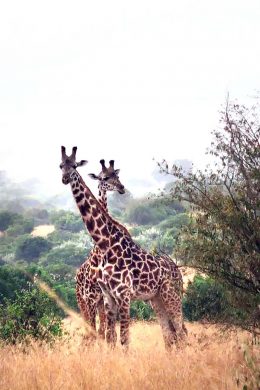
By afternoon, the weather became warm and eventually hot. We came across huge elephants that came close enough to our jeep for us to see them spraying water on themselves to cool off at close range. The only animal we did not catch sight of was the rhino. Time passed quite quickly. By late afternoon, our drivers found a spot that was safe enough for us to get down and we ate lunch provided by the camp under a tree. It was good to stretch our legs and have a bite to eat. Not that we were hungry. We had brought a lot of snacks with us in case anyone got hungry and had been eating nonstop.
After our meal, we spotted more wild animals such as cheetahs, zebras, Thomson gazelles, giraffes and wildebeest. We also saw vultures feasting on the carcass of a gazelle killed by perhaps a cheetah. As the sun started to set, we made our way back to the tented camp. The road was bumpy as well as slippery because of the rain the day before. After an hour, we arrived at our destination. Apparently, the British influence still prevailed in Kenya, our friendly driver suggested that we enjoy a cup of tea first, before we go back to our rooms. Sure enough, tea and cookies were waiting for us at the dining area and we were happy to sip a cup to tea after a long ride.

We soon headed back to our tented camp to freshen up before dinner. It felt a little bizarre to be in a room with no telephones or locks. Internet access is almost impossible. We simply zipped up our tents when we were ready to retire. We also merely zipped up our “windows” when the weather grew cold during the night. Dinner was served at the same open-air dining area. There was a big bonfire next to the dining area where a smiling entertainer played his guitar and sang his native songs as well as some old popular English songs.
Our group had already been in Kenya for three days before we went on the game drive but the other attractions we visited earlier paled in comparison to this one. Yes, the ride was bumpy and not so comfortable and it was not fun eating cold and dry food from the lunch box. But all this discomfort disappeared the minute we saw a beautiful animal moving nonchalantly in their natural habitat, oblivious of the hundreds of tourists peering at them from their various vehicles, many equipped with high-tech cameras with their huge zoom lenses.
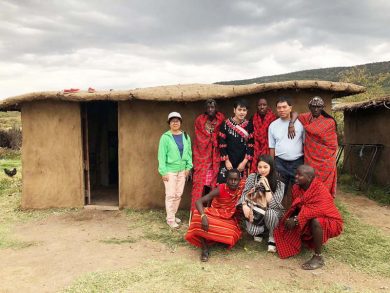
Maasai village
The day before, we had visited the Maasai Village inhabited by Nilotic ethnic group. Dressed in their bright red tribal costumes, the friendly Maasai people welcomed us with their tribal dance and songs. There was also a short demonstration on how to make fire. They also told us about life at their village. The village head explained that the way they selected the head of the tribe was to have the men compete in a jumping contest and the man who jumped the highest would become the village head. The villagers live in harmony by observing their customs and traditions strictly. Anyone who left the village and come back had to go through strict re-orientation procedure to assimilate back into their society.
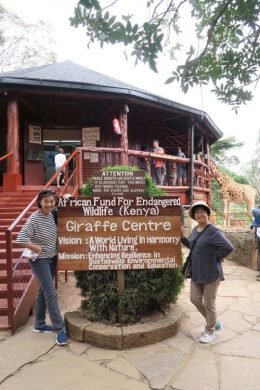
Giraffe centre
The Giraffe centre was a bit of a disappointment as the place was crowded with camera-wheeling tourists who wanted to get their photo taken with a giraffe at all cost. After fighting our way through the camera-clicking crowd to get glimpse of a Rothschild giraffe named Daisy and her two friends, we ourselves went photo-crazy and managed to get some photos with Daisy who was happily slurping away the food pellets that the visitors were feeding her.
“We had visited the Maasai Village inhabited by Nilotic ethnic group. Dressed in their bright red tribal costumes, the friendly Maasai people welcomed us with their tribal dance and songs.”
Karen Blixen Museum
Novel and movie lovers went down memory lane at the Karen Blixen Museum. It was the farm that Danish writer Karen Blixen actually lived from 1917 to 1931. The house became famous when her book on the memoirs of her life in Kenya was made into a movie “Out of Africa” in 1985, as most of the Oscar winning movie starring Meryl Streep and Robert Redford was filmed in the house. The house eventually became a museum and the caretakers of the house has maintained it the way it was when the author lived in it. We toured the house, the gardens as well as the coffee processing equipment area.
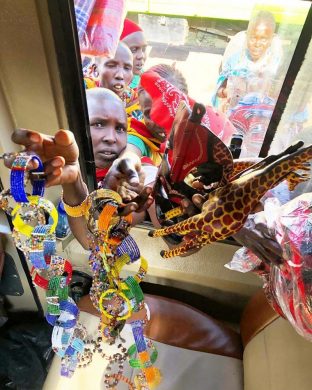
Homeward bound
After five amazing days in Kenya, we took the long dusty drive from Maasai Mara back to the Joma Kenyatta international airport in Nairobi. There wasn’t sufficient time to do much shopping on this trip to the delight of our husbands. But we did pick up some souvenirs from the street vendors who were more than enthusiastic to sell their wares. The happy memories in our minds and beautiful photos in our cameras were more than enough for us to remember our trip to Kenya.
“The happy memories in our minds and beautiful photos in our cameras were more than enough for us to remember our trip to Kenya.”


